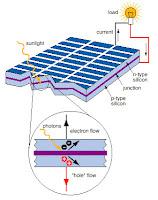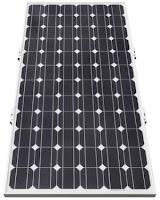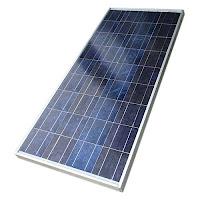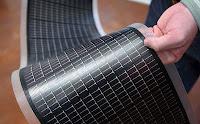 Solar Panels constitute a group of interconnected Photovoltaic (PV) cells. Photovoltaics is the direct conversion of light into energy at the atomic level, and PV cells do just this depending on the light incidence and without an external voltage source. PV cells are made up of crystalline silicon that group together to form Solar Modules which further group together to form a PV Array. The larger or wider the array the more light it will capture hence producing more electricity. The type of current they produce is Direct-Current (DC) electricity.
Solar Panels constitute a group of interconnected Photovoltaic (PV) cells. Photovoltaics is the direct conversion of light into energy at the atomic level, and PV cells do just this depending on the light incidence and without an external voltage source. PV cells are made up of crystalline silicon that group together to form Solar Modules which further group together to form a PV Array. The larger or wider the array the more light it will capture hence producing more electricity. The type of current they produce is Direct-Current (DC) electricity. About 90% of PV cells that exist in the world today constitute a variation of a crystalline silicon base. Some scientists have argued that the main difference between the type of PV cells is the degree of silicon purity in them. This also is a major determinant when it comes to efficiency. You will also read or hear about Solar Panel efficiency which to explain without being too technical is the ability of a said Solar crystal cell to convert a specific percentage of the light received into electricity. Lets look at the different panels:

Mono-Crystalline
Mono-crystalline: These are produced from silicon wafers or single cylindrical crystal of silicon. They are noted for their high silicon content.Pros: Most efficient panels in the market for both energy and space, they also tend to last longer (>25yrs).
Cons: More expensive, need micro-inverters to prevent circuit shutdown when partially covered by shade, and reduced performance in high temps.

Poly-Crystalline
Poly-crystalline: They are produced from molds of melted and recrystallized silicon. They contain lower silicon content than the mono-crystalline.Pros: Perform better in high temperatures, cost less to produce -- so customer saves more.
Cons: Less efficient than the mono-crystalline, require more panels for reasonable amount of energy production.

Thin Film
Thin Film or Amorphous: Unlike the other conventional industrial productions, these are not produced from crystalline structures in anyway. They are made of a thin homogeneous layer of silicon atoms attached to a base component or substrate. This base can either be rigid or flexible which increases the possibilities to be creative when installing.
Pros: Use less silicon, and relatively less expensive, very flexible and light weight and sustains partial shading.
Cons: Don't last very long, low efficiency (6-12%), occupy more space to produce reasonable energy.
Other types of Solar PV panels are still in research and development, and some are already in the marker in testing phases. We believe this is a very interesting and necessary market as it helps preserve our environment and our future.
